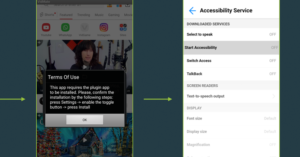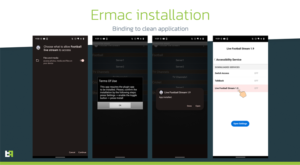PhoneSploit Pro
PhoneSploit with Metasploit Integration.







An all-in-one hacking tool written in Python to remotely exploit Android devices using ADB (Android Debug Bridge) and Metasploit-Framework.
Complete Automation to get a Meterpreter session in One Click
This tool can automatically Create, Install, and Run payload on the target device using Metasploit-Framework and ADB to completely hack the Android Device in one click if the device has open ADB port TCP 5555.
The goal of this project is to make penetration testing on Android devices easy. Now you don’t have to learn commands and arguments, PhoneSploit Pro does it for you. Using this tool, you can test the security of your Android devices easily.
PhoneSploit Pro can also be used as a complete ADB Toolkit to perform various operations on Android devices over Wi-Fi as well as USB.
Features
v1.0
- Connect device using ADB remotely.
- List connected devices.
- Disconnect all devices.
- Access connected device shell.
- Stop ADB Server.
- Take screenshot and pull it to computer automatically.
- Screen Record target device screen for a specified time and automatically pull it to computer.
- Download file/folder from target device.
- Send file/folder from computer to target device.
- Run an app.
- Install an APK file from computer to target device.
- Uninstall an app.
- List all installed apps in target device.
- Restart/Reboot the target device to
System, Recovery, Bootloader, Fastboot.
- Hack Device Completely :
- Automatically fetch your
IP Address to set LHOST.
- Automatically create a payload using
msfvenom, install it, and run it on target device.
- Then automatically launch and setup Metasploit-Framework to get a
meterpreter session.
- Getting a
meterpreter session means the device is completely hacked using Metasploit-Framework, and you can do anything with it.
v1.1
- List all files and folders of the target devices.
- Copy all WhatsApp Data to computer.
- Copy all Screenshots to computer.
- Copy all Camera Photos to computer.
- Take screenshots and screen-record anonymously (Automatically delete file from target device).
- Open a link on target device.
- Display an image/photo on target device.
- Play an audio on target device.
- Play a video on target device.
- Get device information.
- Get battery information.
- Use Keycodes to control device remotely.
v1.2
- Send SMS through target device.
- Unlock device (Automatic screen on, swipe up and password input).
- Lock device.
- Dump all SMS from device to computer.
- Dump all Contacts from device to computer.
- Dump all Call Logs from device to computer.
- Extract APK from an installed app.
v1.3
- Mirror and Control the target device.
v1.4
- Power off the target device.
v1.5
- Scan local network for connected devices to get Target IP Address.
v1.6
- Record Microphone Audio
- Stream Microphone Audio
- Record Device Audio
- Stream Device Audio
Requirements
Run PhoneSploit Pro
PhoneSploit Pro does not need any installation and runs directly using python3
PhoneSploit Pro requires Python version 3.10 or above. Please update Python before running the program to meet the requirement.
On Linux / macOS :
Make sure all the required software are installed.
Open terminal and paste the following commands :
git clone https://github.com/AzeemIdrisi/PhoneSploit-Pro.git
python3 phonesploitpro.py
On Windows :
Make sure all the required software are installed.
Open terminal and paste the following commands :
git clone https://github.com/AzeemIdrisi/PhoneSploit-Pro.git
-
Download and extract latest platform-tools from here.
-
Copy all files from the extracted platform-tools or adb directory to PhoneSploit-Pro directory and then run :
Screenshots



Tutorial
Setting up Android Phone for the first time
- Enabling the Developer Options
- Open
Settings.
- Go to
About Phone.
- Find
Build Number.
- Tap on
Build Number 7 times.
- Enter your pattern, PIN or password to enable the
Developer options menu.
- The
Developer options menu will now appear in your Settings menu.
- Open
Settings.
- Go to
System > Developer options.
- Scroll down and Enable
USB debugging.
- Connect your Android device and
adb host computer to a common Wi-Fi network.
- Connect the device to the host computer with a USB cable.
- Open a terminal in the computer and enter the following command :
- A pop-up will appear in the Android phone when you connect your phone to a new PC for the first time :
Allow USB debugging?.
- Click on
Always allow from this computer check-box and then click Allow.
- Then in the terminal enter the following command :
- Now you can connect the Android Phone with the computer over Wi-Fi using
adb.
- Disconnect the USB cable.
- Go to
Settings > About Phone > Status > IP address and note the phone’s IP Address.
- Run PhoneSploit Pro and select
Connect a device and enter the target’s IP Address to connect over Wi-Fi.
Connecting the Android phone for the next time
- Connect your Android device and host computer to a common Wi-Fi network.
- Run PhoneSploit Pro and select
Connect a device and enter the target’s IP Address to connect over Wi-Fi.
This tool is tested on
 Ubuntu
Ubuntu Linux Mint
Linux Mint Kali Linux
Kali Linux Fedora
Fedora Arch Linux
Arch Linux Parrot Security OS
Parrot Security OS Windows 11
Windows 11 Termux (Android)
Termux (Android)
All the new features are primarily tested on Linux, thus Linux is recommended for running PhoneSploit Pro. Some features might not work properly on Windows.
Installing ADB
ADB on Linux :
Open terminal and paste the following commands :
sudo pacman -Sy android-tools
For other Linux Distributions : Visit this Link
ADB on macOS :
Open terminal and paste the following command :
brew install android-platform-tools
or Visit this link : Click Here
ADB on Windows :
Visit this link : Click Here
ADB on Termux :
pkg install android-tools
Installing Metasploit-Framework
On Linux / macOS :
curl https://raw.githubusercontent.com/rapid7/metasploit-omnibus/master/config/templates/metasploit-framework-wrappers/msfupdate.erb > msfinstall && \
chmod 755 msfinstall && \
./msfinstall
or Follow this link : Click Here
or Visit this link : Click Here
On Windows :
Visit this link : Click Here
or Follow this link : Click Here
Installing scrcpy
Visit the scrcpy GitHub page for latest installation instructions : Click Here
On Windows : Copy all the files from the extracted scrcpy folder to PhoneSploit-Pro folder.
If scrcpy is not available for your Linux distro like Kali Linux, then you can either manually install it : Manual Guide, or build it with a few simple steps : Build Guide
Installing Nmap
Nmap on Linux :
Open terminal and paste the following commands :
For other Linux Distributions : Visit this Link
Nmap on macOS :
Open terminal and paste the following command :
or Visit this link : Visit this Link
Nmap on Windows :
Download and install the latest stable release : Click Here
Nmap on Termux :
Disclaimer
- Neither the project nor its developer promote any kind of illegal activity and are not responsible for any misuse or damage caused by this project.
- This project is for educational purpose only.
- Please do not use this tool on other people’s devices without their permission.
- Do not use this tool to harm others.
- Use this project responsibly on your own devices only.
- It is the end user’s responsibility to obey all applicable local, state, federal, and international laws.


 Ethical Hacking/Pen Testing3 years ago
Ethical Hacking/Pen Testing3 years ago
 Vulnerabilities/Malwares3 years ago
Vulnerabilities/Malwares3 years ago
 Ethical Hacking/Pen Testing3 years ago
Ethical Hacking/Pen Testing3 years ago
 Malwares2 years ago
Malwares2 years ago
 Windows/Mac/Linux3 years ago
Windows/Mac/Linux3 years ago
 Cyber Attacks/Data Breaches3 years ago
Cyber Attacks/Data Breaches3 years ago
 Mobile Hacking3 years ago
Mobile Hacking3 years ago
 Ethical Hacking/Pen Testing2 years ago
Ethical Hacking/Pen Testing2 years ago


















